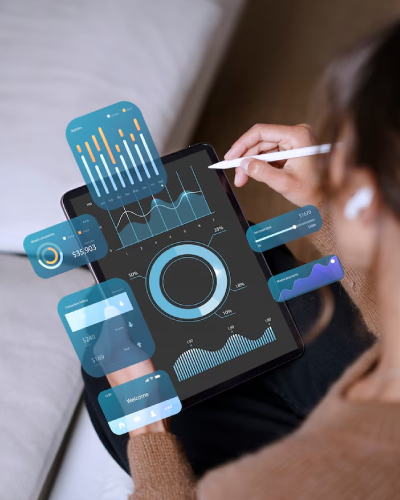

Data annotation and labeling involve tagging raw data—including text, images, audio, and video—with metadata that helps AI models learn patterns and make accurate predictions. This process is essential for supervised learning, where machines require labeled datasets to correctly understand and categorize new inputs.
High-quality data is the foundation of accurate and efficient models in the rapidly evolving landscape of artificial intelligence and machine learning. Data annotation and labeling services are crucial in training AI systems to effectively understand and interpret real-world information.
By meticulously tagging and categorizing data, these services enhance machine learning algorithms, enabling them to perform tasks such as image recognition, natural language processing, and autonomous decision-making with greater accuracy.
We provide scalable solutions tailored to your AI training needs, from text and image tagging to video, audio, and 3D point cloud annotation. With precise labeling, your AI systems gain deeper insights, improved accuracy, and better decision-making capabilities. Let us help you build more innovative, data-driven AI solutions with precision and efficiency. Accurate data labeling is the foundation of intelligent AI models. Our expert-driven Data Annotation & Labeling services ensure high-quality, structured datasets that enhance machine learning performance across industries.
Accurate data annotation is key to training AI models that can efficiently understand and analyze real-world data. Well-annotated datasets ensure that AI models perform optimally, improving the user experience and business efficiency.
Labeling text with tags like named entities, parts of speech, sentiment, and intent recognition. This is essential for chatbots, sentiment analysis, and automated translation applications.
Identifying objects in images using bounding boxes, polygons, and segmentation techniques. This is widely applied in autonomous driving, facial recognition, and medical imaging.
Labeling objects and activities across video frames to help AI track movements. This is crucial for security surveillance, action recognition, and robotics applications.
Transcribing and labeling audio clips for speech recognition models, enhancing voice assistants, call center automation, and accessibility solutions.
Annotating LiDAR and depth-sensing data for AI applications in autonomous vehicles, robotics, and smart city infrastructure.
Labeling data from IoT devices and wearables to support predictive maintenance, health monitoring, and AI-driven automation.